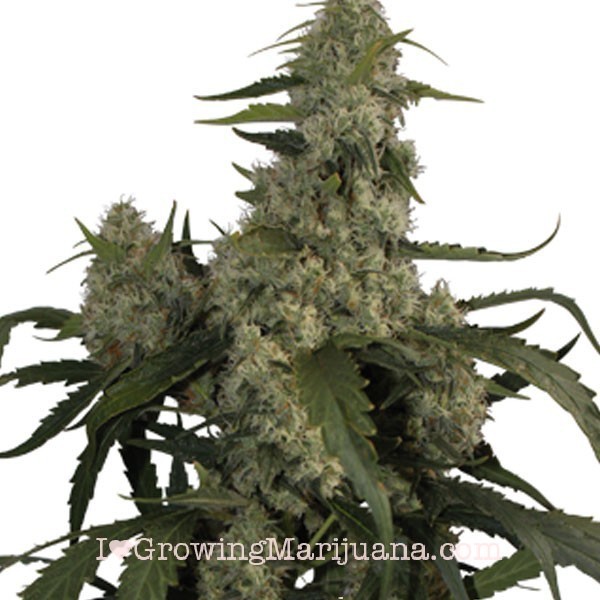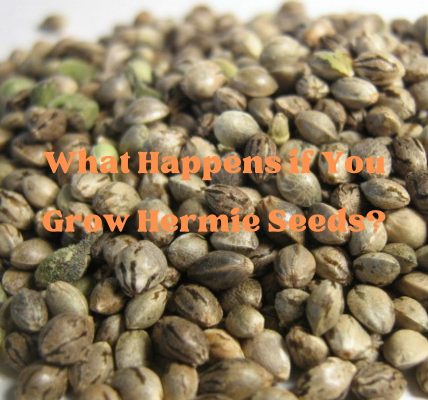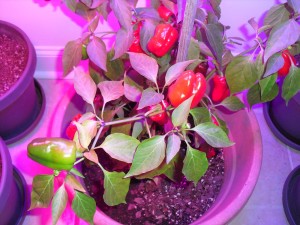Pollination and Feminization of Marijuana Seeds
Getting female marijuana plants is really hit or miss most of the time. In fact, it’s more common to have a crop of mostly males than it is to have one of mostly females. In most cases, your ability to produce feminized marijuana seeds is limited to luck. If you could make sure that all or most of the seeds your female plants produced ended up producing female plants in their own right, then you would probably jump at that chance. Fortunately, there are a few ways to increase the likelihood that you’ll end up with female marijuana plants. Two of those ways include using colloidal silver and rodelization.
Any discussion of marijuana pollination must first start with the methods of traditional fertilization. Although unfertilized female marijuana plants will consistently produce the best smoke, there are a lot of reasons why you might want to pollinate your plants. Unfertilized (or sinsemilla) plants will naturally produce more THC (the active ingredient in marijuana) and a much better smoking experience, but, if you don’t have seeds for next year’s crop, then you’ll be stuck purchasing more from a marijuana seed company.
If you have ever dealt with overseas marijuana seed companies, then you know it can kind of be a crapshoot. You never know exactly what you’re going to get and it’s not uncommon to end up with marijuana seeds that have yet to mature properly. It’s also not uncommon to find that a majority of the seeds you receive will not germinate. So, it makes good financial sense to designate some plants for fertilization in any one crop. Of course, that doesn’t mean you’ll have to lose the overarching quality of the sinsemilla bud every time you fertilize your plants. There is also no way to guarantee that you’re going to produce female marijuana seeds if you use traditional fertilization practices. We’ll go over some non-traditional, marijuana seed feminization techniques a little later on.
Traditional Marijuana Seed Fertilization Techniques
In the great outdoors, marijuana plants usually rely on the wind to help foster fertilization. But, the plants also rely on genetics. Male marijuana plants tend to reach sexual maturity around 2 weeks before female plants. During that time, they will grow noticeably taller than their female counterparts and start to produce pollen sacs. Pollen sacs look a lot like buds, but, when they open up, they produce a fine, sticky substance that is the building block for reproduction.
While the male plant is doing all of this, the female plant is beginning to reach her sexual maturity. The female plant will produce stigmas that work to trap the male pollen. Then, that pollen will work its way into the reproductive system to begin producing marijuana seeds.
Although there isn’t much wind in an indoor environment, leaving the plants on their own will still frequently produce fertilized female marijuana plants. Many growers tend to separate the males and females once they can determine the sex. If you have no interest in pollination, then you can simply eliminate the males. For the purposes of this article, however, you’re going to want to keep the males alive. In reality, you only need a single male marijuana plant for most traditional fertilization techniques. So, once you can determine the sex of the plant, you can simply pick the male plant that is your favorite variety or has the best characters and then isolate it. What you do with the other male plants is entirely up to you.
The isolated male plant, however, should be forced to flower using a 12/12 light regimen. (Obviously, you want to make sure that the rest of the crop stays under continuous light and that the male plant doesn’t receive any of that light during the dark period). When the male plant has adequately flowered, it will start producing the pollen that you require. You don’t need to take the pollen from the plant and then immediately transfer it to the female plants. In fact, what you’ll want to do is save the pollen for later use.
To do this, you only need a piece of paper and an envelope. When the pollen sacs open and produce flowers, you merely need to transfer the pollen to the piece of paper. Then, dump that pollen into an envelope and label it for later use. Make sure to put the envelope into the freezer to preserve the vitality of the pollen.
After that, you can let your female plants grow in vegetative state for as long you can muster. When it comes time to flower the females, then you’ll want to bring out the saved pollen from the freezer. Remember that you want to save pollen from a male plant that is of a certain variety. You might have a particular preference or you just might want to keep the strains relatively intact. For instance, if you have a male plant and a female plant that both came from Strain X and you really enjoyed Strain X, then you’ll want to ensure that the “bloodlines” are as pure as they can be.
When pollen is placed on a female plant, it generally means that the plant will no longer produce sinsemilla buds. In Spanish, sinsemilla literally means “without seed,” and the act of fertilizing the plant generally eliminates that distinction. But, again, you don’t have to use the pollen on every female plant and you don’t even have to use it on more than a single cola of a single plant. For this to work, of course, you have to be very careful not to pollinate any flowers on the same plant or any flowers on any other plants.
Simply place the frozen pollen into a small bowl and then use a watercolor brush to gently “paint” the pollen onto the top cola of the desired plant. This entire plant should also be segregated from the other plants as to avoid cross-contamination with the pollen. After around 4 days, you can move the plant with the pollinated cola to the 12/12 flowering room. At this point, the pollen will be practically glued to the pistils and the likelihood that any other flowers become pollinated is very slim.
Over the course of the flowering period, marijuana seeds will start to develop in the pollinated cola and the remainder of your female plants will mature as sinsemillas. Monitor the activity of the pollinated cola to ensure that you harvest the marijuana seeds at the right time. When they are mature, you can separate them from the rest of the cola with your fingers. Then, place them in some kind of container with a label (e.g. the variety’s name) and put the container in the freezer. There they will retain their vitality and be able to germinate by the next growing period.
Be sure to not harvest the marijuana seeds before they’re ready. The seeds should have a nice mottled, brown or tan color instead of being green. If you harvest green seeds, then the chance that they will germinate is significantly lowered. In addition, if this is the only batch of marijuana seeds that you have for the next growing cycle, then you might end up having to purchase expensive seeds again.
In any event, there are a lot of advantages to pollinating your own plants and especially to pollinating them in such a minimalistic way. Most of the grass you’ll harvest will be high-quality sinsemilla bud because you only pollinated a single cola. You will also get seeds that have favorable genetic material that will eventually produce a smoke very similar to the one you’re used to (this technique is also applicable if you want to hybridize your plants). In addition to all that, it just makes good financial sense. No one wants to have to pay for more marijuana seeds every time a new growing cycle comes up. This is the only way to get high-quality smoke for your current crop while also ensuring the existence of future crops at a cost-minimum.
Of course, one thing you can’t ensure using traditional fertilization techniques is the actual sex of the plant. Limiting yourself to only a single cola that produces seeds might be a recipe for disaster if you end up with a large quantity of males during your next growing cycle. That’s why feminization techniques have become so popular in recent years.
What is Marijuana Seed Feminization?
Without any external manipulation, most female marijuana plants will produce seeds that have undetectable and unchangeable sexual characteristics. Because the female plant is prized for its increased THC content (by comparison to males), it often receives precedent from many growers. But, with traditional methods, there’s no way to tell if you’re going to get a batch full of males, a batch full of females, or something in between. Ideally, you want as many female marijuana plants in your garden as possible so that you can produce consistently high-quality smoke later on.
Seed feminization is a group of pollination techniques that strives to put the odds back in your favor. Obviously, fertilization in its own right provides you with a lot of advantages, but feminization essentially guarantees that you’ll get a majority of female plants for your next crop. Marijuana seed companies often sell feminized seeds that often purport to give you that assurance, but, again, buying from a seed company is always going to be a crapshoot. You might end up with seeds that are supposed to be feminized but churn out males or hermaphrodites against your wishes. So make sure to buy marijuana seeds from a well-respected seed company.
The two main types of seed feminization are rodelization and colloidal silver. Both offer their own advantages and disadvantages, but, if done correctly, they will provide you with a batch of marijuana seeds that is almost all female.
Rodelization sort of manipulates natural, biological factors at play in the female marijuana plant. Oftentimes, when the female marijuana plant becomes stressed or is nearing the end of its lifecycle without having been fertilized, it will start to grow pollen sacs on its own. Marijuana plants are naturally going to want to propagate their seed to extend the line, and when they don’t get fertilized, they will sometimes take to fertilizing themselves. The reason that rodelization frequently produces seeds with female characteristics is because all of the genetic and reproductive material involved also had female characteristics.
This is the crux of seed feminization. It is the unique ability of the female marijuana plant to essentially fertilize itself (without actually being hermaphroditic). If both the eggs and the pollen come from genetically female plants, then there is a greater likelihood that the plants will produce female seeds. Although the concept might be simple, actually putting it into practice can be a bit difficult.
The colloidal silver method works in much the same way. Very small concentrations of colloidal silver (which is pure silver) are put into distilled water. This water is then sprayed onto female marijuana plants during the flowering cycle. It reacts with the plants so that they start producing the same pollen sacs you might see during rodelization (or normally on males). Again, the difference in this case is that genetic material in the pollen is completely female and, thus, will be more prone to producing female marijuana seeds.
There are obvious reasons as to why anyone would want to try either of these methods. Ensuring that your crop is full of the THC-laden females on a consistent basis is something that most growers won’t pass up. But, it’s also a good way to ensure that you get high-quality, sinsemilla bud with a large portion of your marijuana crop. You don’t have to pay for marijuana seeds, you don’t have to worry about getting too many males, and you can just keep growing high-quality smoke indefinitely.
How to Perform Rodelization To Make Feminized Marijuana Seeds
Rodelization is the easier of the two options, but it’s not always the most effective. It has the advantage of being completely natural, but it forces you to rely on the plant to act. Essentially, your goal with rodelization is to let the female marijuana plant stay in flowering state long after the ideal harvest time. The plant will recognize this is as a dire situation and one that requires quick action to be resolved. In many cases, this results in pollen sacs being created. When the pollen sacs start showing up, you can harvest the pollen as you would in the examples at the beginning of the article. Then, of course, you could choose which colas or buds you want to slather the pollen on to produce the feminized marijuana seeds. In general, you have to segregate a single plant and force it to flower on its own so that the others can be pollinated adequately.
The major drawback to this technique, however, is that it is not always reliable. It requires a confluence of factors to go right, and, even then, you might not come up with a batch of overly-feminized marijuana seeds like you’d want. First of all, not every plant is going to have the same response to being left in the flowering state for too long. Obviously, you can’t test out every single one of your plants to see if they will produce pollen sacs because then you run the risk of degrading the THC content and quality. Leaving the plants in flowering stage past their peak harvest time is normally not a good thing. When you consider that you might not get any pollen from it, you might think twice about this method.
Of course, there are some varieties that maintain the genetic traits for rodelization and will produce pollen sacs virtually every time. If you know that you’re working with a variety like this, then you can essentially practice rodelization and achieve consistent results. That being said, there’s also a chance that you are just using female pollen that has heavy male characteristics. If the plant naturally produces pollen like that, then there is a chance that it is simply has male-heavy genetics. In this case, you might end up with a regular batch of half male and half female seeds. There’s also a lot less pollen to work with in general.
If you’re growing your plants organically and you can afford to give this a try, then it’s really the best option. It is cheap, all-natural, and still gives you the chance to produce feminized marijuana seeds. It’s also a nice little science experiment to see if your plants will produce pollen sacs or not.
Using Colloidal Silver To Make Feminized Marijuana Seeds
Trying the colloidal silver spray method is a lot more difficult and time-consuming, but it appears to work with a higher degree of success than simple rodelization. Before we discuss how to actually use it, we must understand how to make it. The colloidal silver method isn’t merely the act of sticking silver coins in a spray bottle and going crazy on your plants. The whole method requires pure silver, some electricity, and a lot of water. In fact, there are five key ingredients that you’ll need to make your own colloidal silver spray:
- Distilled water
- Pure silver (coin, wire, etc.)
- 9-volt battery
- 9-volt battery connector
- Alligator clips
- Soldering iron
If that sounds a little confusing or a little above your pay grade, then you’re probably not alone. Colloidal silver solutions are sold commercially, but they often come at a premium cost and are actually primarily used for drinking (at much lower concentrations than you would use for a marijuana plant). Even so, finding pure silver of any kind isn’t exactly cheap. For the most part, you can find pure silver coins at a coin shop or the local mint at varying prices and amounts. You can probably make due with two pieces of half ounce silver. You can also use silver wires, but most people opt for coins. Just make sure that the silver you use is .9999 or .999 silver. It has to be pure or else it won’t function properly.
Once you’ve got your silver, you need to connect the battery connector to the battery itself. There should be two wires extending from the battery connector (one red, one black). If you opt for the alligator clips, then they need to be soldered to these wires to improve the electrical current. This will, of course, require the use of a soldering iron, but if you don’t have one or you don’t know how to solder, then you might be able to get some help at a hardware store. The other option that doesn’t involve soldering irons or alligator clips is cutting a hole in the silver coins and then wrapping the wires through that hole. In most cases, though, it’s easier to conduct electricity and hold the current with the soldered-on alligator clips.
Whether you’re using the alligator clips or another method, the battery wires must be connected to the silver coins somehow. Then, those silver coins must be placed in a cup of distilled water (but not the alligator clips or the wires). Again, it is very important that you use distilled water and not any kind of other water that might contain impurities. The electrical current essentially creates tiny silver ions that will float in distilled water. This is because the water is deionized and the particles won’t try to bond with anything else.
In any event, you need to leave this concoction as it is for about 7 hours minimum. The longer you leave the electrically-charged silver coins suspended in the distilled water, the higher concentration of colloidal silver you will receive. You don’t want the colloidal silver generator to run for too long because it will eventually produce particles that are too big. Nothing will appear to happen at first, but you’ll start to see a residue or film on the top of the distilled water over time. Again, do not let the alligator clips or the wires themselves get wet.
Once you have your solution, then you’re ready to put it into practice. Choose one female marijuana plant to receive the spray and then mist that plant every day with the solution after it starts flowering. Continue misting the plant until you start to see male pollen sacs forming. This usually only takes about 10 to 14 days, but it could be longer or shorter depending on the variety. Once the pollen sacs appear, you can use the same method of retrieval and then fertilization outlined at the beginning.
It should be noted that colloidal silver in high concentrations is not safe to consume under any circumstances. Although the solution can be used and consumed for health reasons, it’s usually done so at a much smaller concentration. In fact, any parts of the marijuana plant that you spray the solution on to should be discarded. Some marijuana growers are willing to pinpoint a few locations on a certain plant so as to avoid not scrapping the entire plant later on. But, this can be unsafe if you’re not careful about where the spray goes. If even trace amounts make it onto the some of the buds, then those buds are unfit for smoking or consuming.
Any pollen that is created as a result of the interaction between cannabis and colloidal silver is 100{2b4a1a3f3bbc9c5a43771f34362679a3afcf9df24c0d9f4fe2fa80a69d802033} safe to use. It’s just that any part of the cannabis plant that comes into direct contact with the colloidal silver spray should be considered toxic. The upside to using colloidal silver is that it consistently produces high-quality feminized marijuana seeds so that you are more likely to come up with all or mostly female crops. You can also produce seeds ad infinitum while also controlling the actual amount of marijuana seeds produced.
Other Options
While both of these options have had beneficial outcomes, they also come with some considerable downsides. There’s no guarantee that rodelization will work and colloidal silver requires a lot of time and money to get it going. Many personal marijuana growers have neither time nor money and they might want something that is more of a sure bet. In that case, cloning female marijuana plants is perhaps the most cost-effective and efficient option. While it is not necessarily a seed feminization technique, it can ensure that you will receive female marijuana plants and female buds on a consistent and reliable basis.
Instead of relying on marijuana seeds (which are essentially a combination of genetics), cloning allows you to pick a particularly desirable plant and then recreate it exactly. So, you can continue getting high-quality (and familiar) smoke without any uncertainty or high costs.
Even so, there are several situations in which marijuana seed feminization makes more sense. For instance, if you want to hybridize the DNA of the next generation, then the only way to do that is with selective fertilization. For instance, if you wanted to create mix between two strains, you would need to combine the reproductive material of those two strains. Although effective, cloning only allows you to recreate a single strain over and over again. Of course, you might like that strain, but it won’t do a lot in terms of giving yourself an assortment of strains to try. In any event, it’s clear that female plants are the primary choice among marijuana growers and knowing how to ensure the consistent reproduction of female plants is of great importance.
Thanks for reading and I hope you liked it. What are your experiences with making marijuana seeds? Please leave your feedback in the comment section below and don’t forget to share or like this article.
An easier path might be to just buy feminised seeds. ILGM sells the finest strains from Amsterdam, and ships them worldwide for free. Have a look in our marijuana seed shop.
Happy growing,
Robert Bergman
source: www.growweedeasy.com
The post How To Make Feminized Marijuana Seeds appeared first on .
(c) – Read entire story here.













